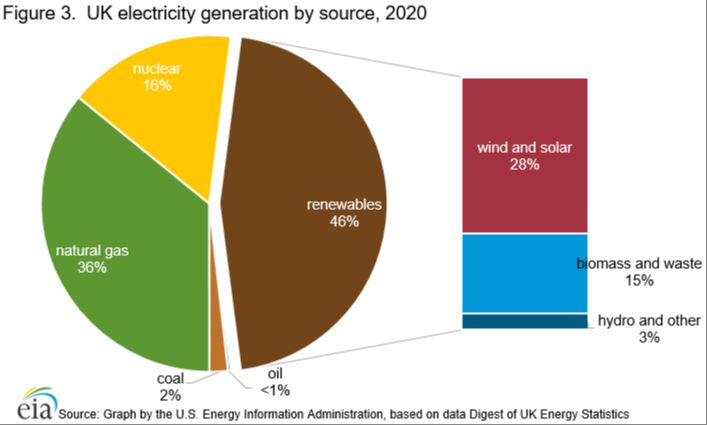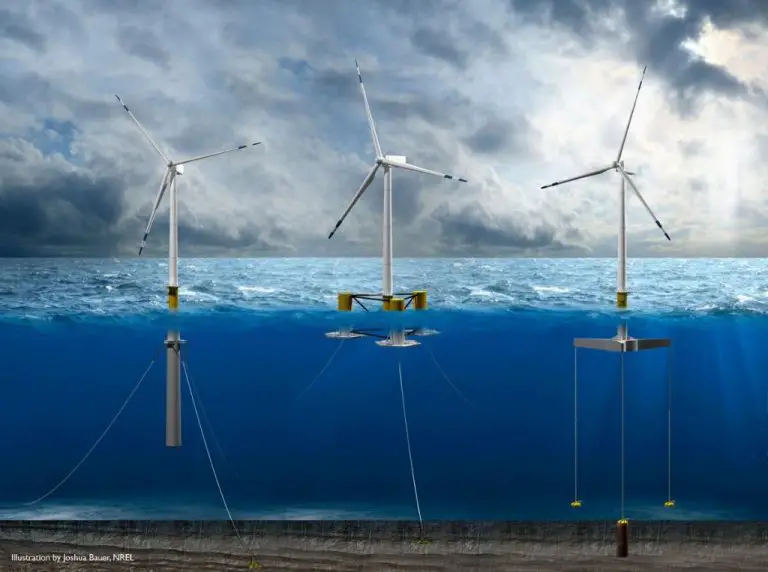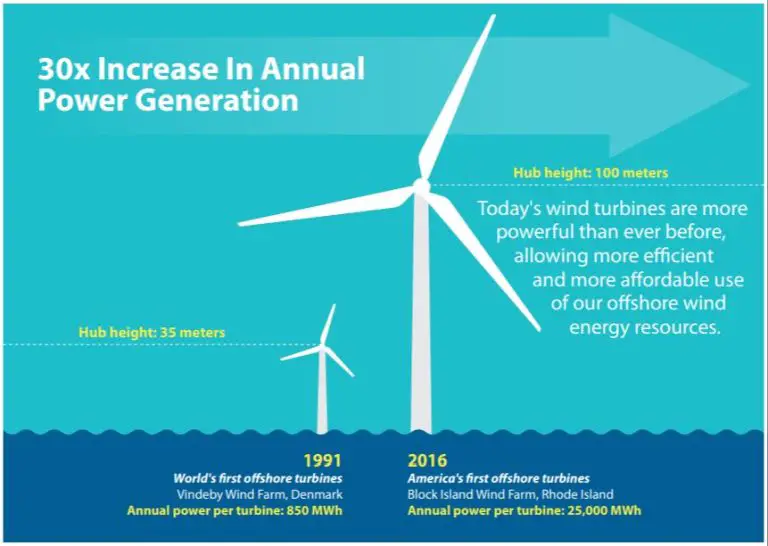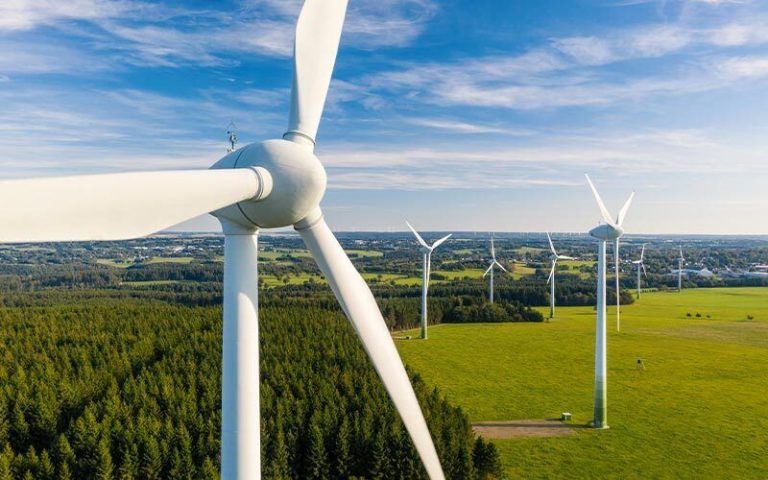Which Is The Uk’S Biggest Source Of Renewable Energy?

As a planet facing a climate crisis, renewable energy has become more crucial than ever before. Renewable energy sources produce far less carbon emissions than traditional fossil fuels, helping mitigate global warming. The UK in particular has set ambitious targets for sourcing its energy from renewables, aiming to generate 50% of electricity from renewable sources by 2030.[1] But what is the UK’s biggest renewable energy source currently? This article provides an overview of the major types of renewable energy in the UK today and examines which one generates the most power. Analyzing the breakdown of renewables can help inform future policy and investment decisions to continue growing clean energy in the UK.
[1] https://www.nationalgrid.com/stories/energy-explained/how-much-uks-energy-renewable
Wind Power
Wind power is one of the main sources of renewable energy in the UK. As of 2022, the UK had over 27 gigawatts (GW) of installed wind power capacity, accounting for around 25% of all renewable electricity generated in the country.[1] Offshore wind capacity stood at around 10.5 GW in 2022, while onshore wind capacity was around 16.5 GW.[2]
The growth of wind power in the UK has been significant in recent years. Installed capacity has more than quadrupled since 2010. The UK is now the world’s largest offshore wind market, after overtaking Denmark in 2008.[3]
The majority of wind farms in the UK are located in Scotland, which accounted for around 75% of total wind power capacity in 2022. Northern Ireland, Wales and England also have a number of onshore and offshore wind farms in operation.[1]
The UK government aims to continue expanding wind power capacity, with targets of 40 GW of offshore wind by 2030. This is part of the country’s push to generate more renewable energy and reduce greenhouse gas emissions.[3]
Solar Power
Solar photovoltaic (PV) power has seen tremendous growth in the UK over the past decade. According to Greenmatch, the solar capacity in the UK increased from 5,488.6 MW in 2014 to 13,259 MW in June 2019 [1]. Statistics from Statista show that the cumulative installed solar PV capacity in the UK reached 14,897 MW by 2022 [2].
Projections indicate continued strong growth for solar power in the UK. Mordor Intelligence expects the UK solar market to reach 18.53 GW by 2024 and 53.12 GW by 2029, growing at a CAGR of 23.53% [3].
Most of the solar PV capacity in the UK comes from ground-mounted solar farms, especially in southern England. Roof-mounted solar also contributes significantly, particularly on commercial and industrial buildings. The falling costs of solar panels, favorable policies, and increased public awareness are driving the growth in solar power capacity across the UK.
Hydropower
Hydropower is an important source of renewable energy in the UK. According to Statistics on “Renewable energy in the UK – Hydropower”, the total hydropower capacity in the UK was 4,897 MW in 2022. This accounted for around 11% of total renewable energy capacity in the UK.
The main hydropower resources in the UK are located in Scotland, which accounted for around 71% of total UK hydropower capacity in 2022. Northern Ireland also has significant hydropower resources. Major hydropower plants are located at Cruachan in Argyll, Foyers north of Loch Ness, and Tummel Bridge in Perthshire, Scotland. There are also several smaller hydropower plants located at reservoirs and rivers across the UK.
According to New assessments reveal UK’s hydropower capacity and push for tidal energy, there is potential to expand hydropower capacity further, especially through small-scale and low-head hydropower projects. However, environmental constraints limit large-scale hydropower expansion in the UK.
Bioenergy
Bioenergy has become a significant renewable energy source in the UK. According to a Statista report, the UK generated 596 GWh of electricity from bioenergy in 1990, increasing substantially to 40,047 GWh by 2020. Bioenergy accounted for 12.8% of total renewable generation in the UK in 2022, as per a government report.
The main types of bioenergy utilized in the UK are solid biomass from wood pellets, biogas from anaerobic digestion of food waste and agricultural residues, and liquid biofuels like biodiesel. Biomass is the predominant source, representing over 90% of bioenergy generation. Drax and Ferrybridge power stations in England are among the largest biomass electricity generators.
Bioenergy capacity has grown 171.8% between 2012-2020 according to Uswitch, driven by government incentives for renewable heat and power. The UK aims to continue expanding bioenergy to provide flexible grid balancing while meeting carbon reduction goals.
Marine Energy
Marine energy, also known as ocean energy, utilizes the sea’s waves, tides, and currents to generate electricity and power homes and businesses. According to RenewableUK, the current installed capacity of marine energy in the UK is around 2.8GW, with the vast majority (2.6GW) coming from tidal range projects like the La Rance tidal power station in France (https://www.renewableuk.com/page/WaveTidalEnergy). However, there is potential for significant further growth, with estimates that the UK could support 10GW of tidal stream capacity and 30-50GW of wave energy capacity in the future.
There are several types of marine energy:
- Tidal range – Using the difference between high and low tides to generate power by moving water through a turbine
- Tidal stream – Placing turbines underwater to harness the energy from fast tidal currents
- Wave power – Converting the energy from waves into electricity using oscillating water column devices or other converters
- Ocean currents – Using ocean currents like the Gulf Stream to power turbines
Key tidal energy projects in the UK are concentrated in Scotland and Northern Ireland, including the MeyGen tidal stream array in the Pentland Firth and several planned tidal lagoons. Wave energy devices have been tested at the European Marine Energy Center (EMEC) in Orkney, which provides grid-connected open-sea testing facilities. The UK has the most potential for marine energy among the European nations, but development has been slower than expected. Challenges include technology costs, grid connection issues, and policy support (Post.Parliament.uk, https://post.parliament.uk/research-briefings/post-pn-0625/).
Geothermal
While geothermal energy currently contributes a small amount to the UK’s renewable energy mix, there is significant potential to expand its use, especially for heating purposes. According to a 2021 report by the International Energy Agency, the UK had an estimated 43,700 geothermal heat pump systems installed as of 2020, providing about 0.2% of the country’s total heat demand. Theoretical geothermal resources in the UK could meet up to 20% of heat demand, but only about 0.6% of this potential is currently being utilized.
Most geothermal capacity in the UK is from ground source heat pumps, which use the ground’s stable temperatures to heat and cool buildings. Scotland has the greatest potential for geothermal electricity generation, especially in the highlands where there are areas of high heat flow. Deep geothermal power plants could theoretically provide up to 20% of Scotland’s electricity needs. While no large-scale geothermal electricity plants currently exist in the UK, feasibility studies are underway to evaluate potential sites. There is also growing interest in extracting geothermal heat for district heating networks in cities like Glasgow, Stoke-on-Trent, and Newcastle.
Comparison
According to data from National Grid, in 2022 renewable energy sources accounted for 38% of total electricity generation in the UK.1 This was a new record high, with wind power being the largest contributor at 26.9% of generation. Solar power accounted for 4.4% and bioenergy 5.7%.
Looking at growth trends, wind power capacity has increased rapidly in recent years, with the amount of energy generated from wind nearly tripling between 2015 and 2021.2 Installations of solar PV have also grown significantly, with a five-fold increase in capacity over the last decade. Bioenergy generation has remained relatively steady.
In terms of ranking, onshore and offshore wind power are now the UK’s largest renewable energy sources. This is followed by bioenergy, solar PV, and hydroelectric power. Wave and tidal stream energy remain minimal contributors.3
Challenges
The renewable energy sector in the UK faces several key challenges that are acting as obstacles for growth. Despite strong growth in recent years, there are policy, regulatory, and public opinion hurdles that must be addressed.
One major obstacle is the unpredictability and variability of renewable sources like wind and solar. This makes balancing electricity supply and demand more difficult. Upgrading grid infrastructure is critical but costly [1].
High upfront capital costs also hinder faster adoption. The UK government has provided subsidies, but critics argue more stable, long-term policies are needed to provide investor confidence [2].
Public opinion is split on issues like onshore wind farms and their impact on landscapes. Community outreach and education on the benefits of renewable energy projects could build more support [3].
Overall, the growth of renewable energy in the UK faces challenges around grid capacity, policies, and public views. But with focused strategies, these hurdles can be addressed to enable further expansion.
Conclusion
To recap, the UK’s biggest source of renewable energy is wind power, which accounted for over 20% of total renewable generation in 2021. Though other sources like bioenergy and solar are growing, wind remains the dominant source of renewable electricity in the UK.
It’s important that growth of renewables like wind and solar continues in order to meet the UK’s climate targets and reduce reliance on fossil fuels. The UK has set an ambitious goal of generating 50% of electricity from renewables by 2030. Meeting these goals will require further government policy support and investment in renewable energy infrastructure across the country.
Renewables now make up over 40% of the UK’s total electricity generation, showing good progress. But continued expansion of sources like offshore wind and rooftop solar will be key for a clean, sustainable energy system in the UK.






